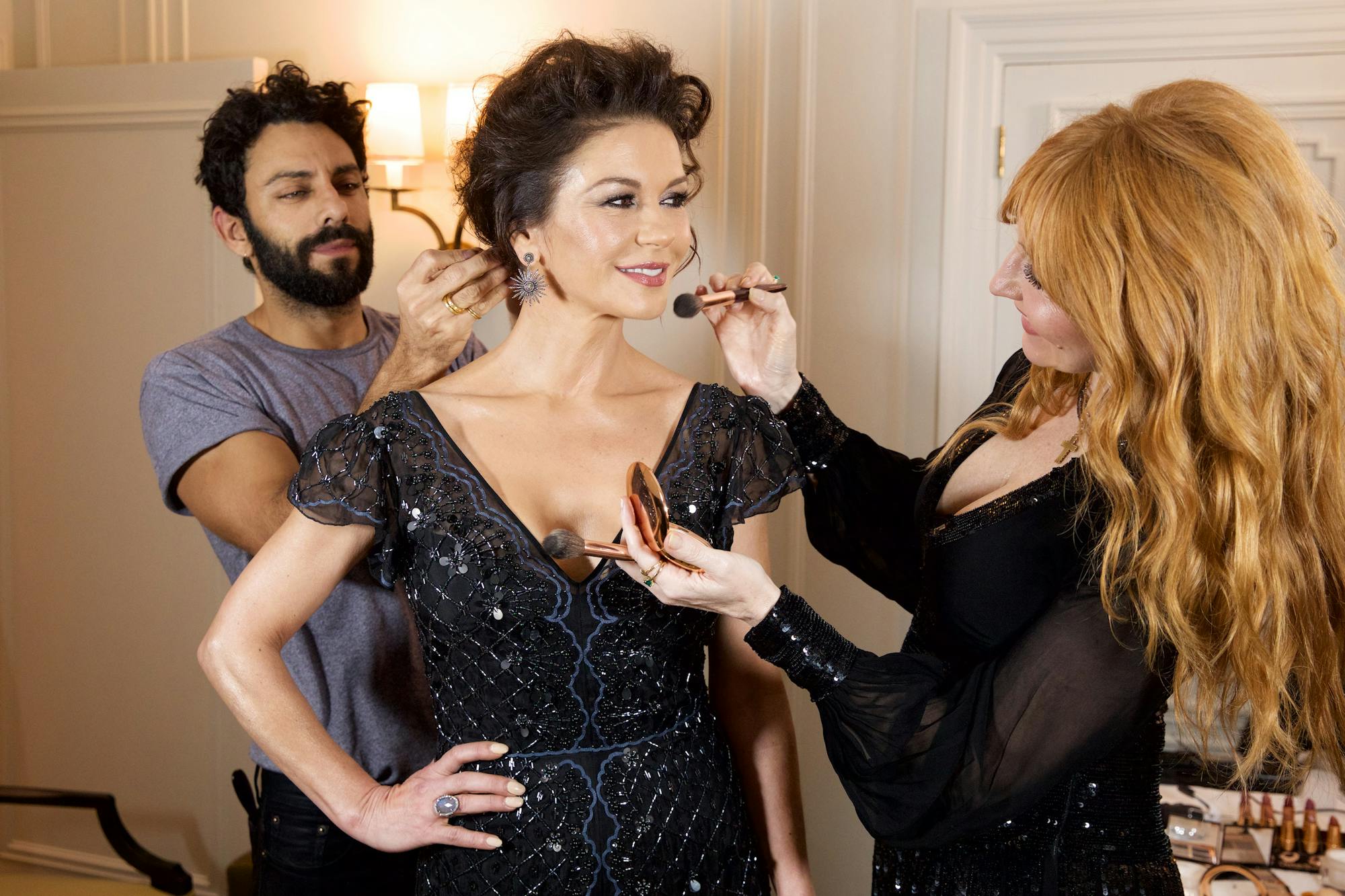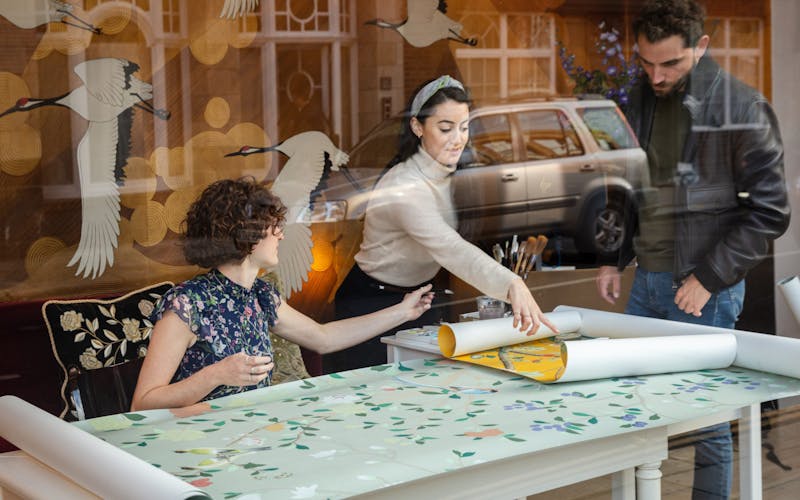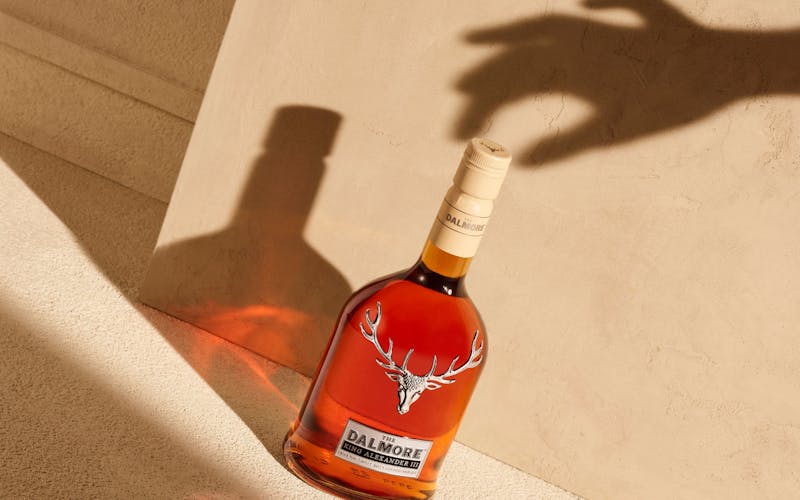

for Walpole members and
non-members available now
at The Londoner



Walpole member Charlotte Tilbury with Walpole Awards 2017 host Catherine Zeta-Jones, CBE.
I was about 13 when I first bought makeup. It being the 1980s, my standard look involved a grey eyeliner and mascara from Boots 17 and a metallic magenta lipstick called Iron Lady from Miss Selfridge. Inspired by pictures I’d seen in Smash Hits of the female members of the Human League – and probably by Phil Oakey himself, since men wearing makeup was central to pop culture back then – I’d put as much of those three items on my face as I could get away with, or until I resembled Robert Smith from The Cure (too goth, even for me). Thinking about it, many of my teenage makeup icons seem to have been men – I’m pretty sure I learned more about the power of the red lip from Japan’s David Sylvian, and the theatrical and playful possibilities of makeup from Visage’s Steve Strange, or Boy George and Adam Ant, than I ever did from more conventional role models. These cultural references may well be lost on anyone under 45, but that’s why we have Google.
My beauty routine has subsequently become much more sophisticated – at some point in my teens, Vogue, ELLE and other glossy magazines took the place of Smash Hits as credible reference points and musicians ceded to the supermodels as my beauty idols. As my income has grown over the years, so too has the quality and quantity of the products in my makeup bag; out with Boots 17, in with Chanel No.5. Before I left the house this morning, I’d used a total of 20 products, 15 of which were makeup: no wonder the beauty market in the UK is worth £9.4 billion.
It’s not only the products in my bathroom that have proliferated: my sources of inspiration have also become much more fragmented. An on-counter makeup session is as likely to influence my look these days as an article in a magazine, and I watched Charlotte Tilbury’s ‘feline flick’ tutorial avidly before finally admitting, with a moue of regret, I’d never have a steady enough hand to go the full Sophia Loren. What’s more, digital has opened up a whole new horizon of beauty trends driven by diverse cultures worldwide, as well as by product innovation and fashion: the relatively recent yet now ubiquitous vogue for bold, groomed eyebrows and strong, full-lashed eyes originated in India and the Middle East. Contouring (I tried it, I looked like a badger) was, apparently, spawned in New York by make-up artist Scott Barnes and the unstoppable Kim Kardashian, who seems, single-handedly, to have created a seismic shift in how society constructs female beauty.
Global opportunities for British luxury beauty brands were much on my mind last week as Walpole prepared to host its annual Chalhoub breakfast to launch their white paper on Beauty in the GCC, and it was encouraging to hear how much of an appetite there is for British beauty brands, if they take the time to understand the complex nuances of local customers. Chalhoub offered four key messages for beauty brands wishing to maximise the opportunity of the Middle Eastern market.
1. Begin to accommodate local consumers by offering customised products and develop multi-platform appealing strategies to engage their public further.
2. Implement long-term and comprehensive strategies to nurture an authentic connection with the new generation.
3. Shift towards online platforms to reach a wider consumer base and offer to the new generation of Arab consumers the unique experience they seek.
4. The digital-savvy new players are entering the offline world and need the support of the industry in order to succeed; the beauty industry should embrace them.
What’s more, it was clear from talking to the British luxury brands attending the breakfast that the more experience the Middle Eastern consumer has of British beauty when travelling in the UK, the greater the appetite when those brands export to the GCC – as the success of Charlotte Tilbury demonstrates just six months after the brand’s first foray into the market, and as Roja Dove’s pioneering approach to ultra-high-end fragrances has shown.
Whilst British consumers are voracious beauty consumers, and our multi-ethnic population offers an unbeatable test bed for brands, at least at the luxury end of the market, home grown beauty brands are in relatively short supply. Not that my make-up bag or bathroom shelf offer a perfect qualitative slice of the British prestige beauty market, but it does seem to me that, with the exception of Charlotte Tilbury, we haven’t been quick to seize the opportunity of the new digital insta-consumer when it comes to cosmetics. We do better when it comes to bath and body and home fragrance – look at the rise and rise of Molton Brown, and of new entrants like Noble Isle. Skincare is also promising, and I’ve been delighted to see one of the winners of the 2017 Brand of Tomorrow Award for Emerging Talent, Aurelia Probiotic Skincare, join Walpole as a core member, and to get to know Votary founders Charlotte Semler and Arabella Preston who are part of this year’s Brands of Tomorrow intake.
However, fragrance is where British brands seem to excel. The 2004 launch in Harrods of the wildly successful Roja Dove Haute Parfumerie was the tipping point for a whole new category of bespoke and semi-bespoke scent, – it’s fair to say that without Roja’s trailblazing approach, the innovative Salon des Parfums on Harrods Sixth Floor – a cornucopia of exciting perfume, including Roja, Penhaligons and Elegantes – would never have been possible. Jo Malone London is Britain’s most successful prestige fragrance brand with 80 doors nationwide and a vast global business, and is currently giving Chanel a run for its money. Also in the niche, affluent end of the market, Ormonde Jayne, a Walpole Brand of Tomorrow, has a flourishing business at home and abroad, notably in the US. Miller Harris, another Brand of Tomorrow, now helmed by the former Penhaligon CEO, Sarah Rotherham, unveiled a new store in the new Westfield expansion. I’d also like to give a shout out to Floris with its two Royal Warrants and a sales ledger full of crowned heads and famous names – Winston Churchill, Marilyn Monroe, Florence Nightingale, Brian Ferry, Mick Jagger, Wallis Simpson, Mary Shelley and many more. Descendants of Floris’ founder, Juan Famenias Floris, have been making and selling scent in Jermyn Street since 1730, and as I write, I’m hunched over the keyboard closely enough to smell their latest scent, 1927, on my wrists. I’m reminded of what Cecil Beaton – whose first exhibition was in 1927 – wrote in his diary about his time as a guest of Pauline Rothschild:
“To defile, even by lying against them, the exquisitely embroidered linen pillows, was the greatest luxury… There were baskets by the bedside with sharpened pencils and rulers… On the rim of the bath there was a frilled lamp by which one could read, and a row of Floris scents, violet, gardenia, etc. The linen was impeccable. Every detail perfect in its finish.”
Some have argued that beauty is a necessity, not a luxury – lipstick was one of the few unrationed items during the last war because it was seen to be good for morale. But at its best, beauty is utterly luxuriant, as well as luxurious, promising a deliciously indulgent experience, where ‘every detail [is] perfect in its finish’. Long may the beauty market in the UK continue to grow.
Please click here to read Beauty in the GCC: Chalhoub Group White Paper 2018.
[email protected]





